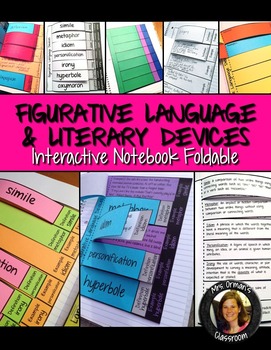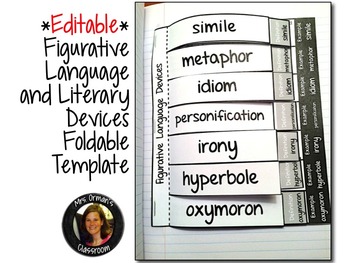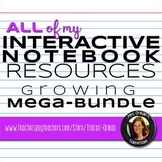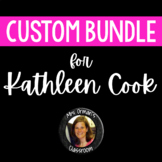Figurative Language Interactive Reading Notebook Activity Editable
- PDF
What educators are saying
Also included in
- Interactive Reading Notebook Fiction and Nonfiction Mega Bundle (Grades 5-12) A YEAR'S WORTH of activities: over 220 Common-Core aligned interactive reading foldable activities for secondary students. You do not have to use the Common Core State Standards to utilize this bundle! This download includPrice $49.00Original Price $62.50Save $13.50
- Price $61.80Original Price $82.50Save $20.70
Description
Editable Figurative Language Interactive Reading Notebook Activity Aligned with the Common Core State Standards (Grades 5-12)
This IS included in my Interactive Reading Notebook Mega Bundle.
Looking for a comprehensive foldable activity that you can actually customize and edit? Look no further...
Students will practice literary, rhetorical, and figurative language devices with this foldable activity. It includes differentiated templates for all levels of learners. I also included a blank template you can type directly onto, making it a unique resource to utilize with your classes.
I included the most popular figurative language and literary devices with definitions and examples from literature:
simile, metaphor, personification, irony, idiom, hyperbole, and oxymoron
In addition, there are examples which use several other devices, such as euphemism, malapropism, allusion, colloquialism, archaism, alliteration, kenning, onomatopoeia, anaphora, and more.
TIMESAVER ASSEMBLY: I know how valuable our time is with students, so all of my foldables can be used WITHOUT glue. Use staples or tape for a faster way to assemble and get to the valuable part of the activity: interacting and responding to the higher-level questions. Of course, if you or your students prefer glue, it can still be used on the activities.
I included a teacher's visual guide with images of the activity and directions for students for assembly.
You might like...
Interactive Notebook Reading Literature Bundle for ANY Novel or Story
Interactive Reading Notebook for Nonfiction Informational Texts
Interactive Notebook Mini Books: Bundle of All 5 Literature & Nonfiction Vocabulary Analysis
Interactive Reading Notebook Activity: Analyzing Author's Choices
You can also create your own:
Interactive Notebook Templates & Shapes Bundle {Commercial Use Allowed}
Interactive Notebook Templates: Mini Books {Commercial Use Allowed}
You can find all my interactive notebook activities here:
Interactive Notebooks and Foldables
Additional Common Core Resources:
Common Core Standards Reading Graphic Organizers for History/Social Studies (RH) Grades 6-12
Common Core Standards Reading Graphic Organizers for Science & Technical Subjects (RST) Grades 6-12
Created and Copyrighted by Tracee Orman © 2014
The NGA Center/CCSSO are the sole owners and developers of the Common Core State Standards © Copyright 2010. National Governors Association Center for Best Practices and Council of Chief State School Officers. All rights reserved.







